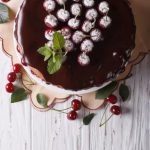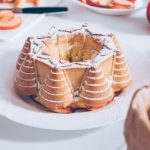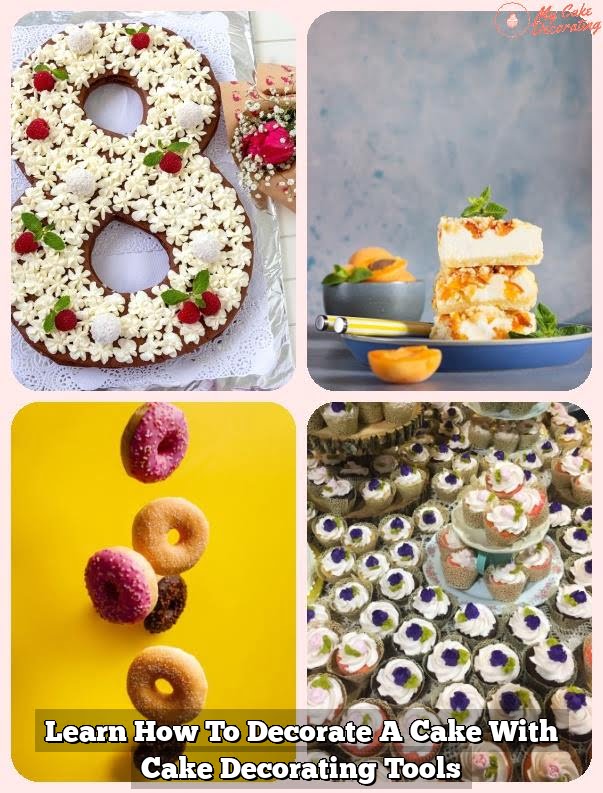Looking to elevate your baking skills and create stunning desserts for special occasions? In this article, we will guide you on how to decorate a molded cake like a pro. Molded cakes are perfect for special events such as birthdays, weddings, or anniversaries, adding a touch of elegance and creativity to your celebration. Whether you’re new to cake decorating or looking to expand your skills, molding cakes can be a fun and impressive way to showcase your talent.
To begin decorating a molded cake, you’ll need specific tools and materials that will ensure your creation turns out beautifully. From piping bags and tips to fondant and food coloring, having the right supplies can make the process smoother and more enjoyable.
In addition to tools, selecting the appropriate mold is crucial in achieving the desired shape and design for your cake. There are various molds available in different shapes and sizes, so choose one that suits the theme of your occasion.
When it comes to baking a molded cake, proper preparation is key. Ensuring the batter is mixed correctly and baked at the right temperature will determine the success of molding. Removing the cake from the mold without damaging its shape requires patience and precision.
In the upcoming sections of this article, we will provide step-by-step instructions on how to decorate a molded cake flawlessly, as well as creative ideas for different types of molds. Stay tuned for expert tips on troubleshooting common issues that may arise during the decorating process.
Tools and Materials Needed for Decorating a Molded Cake
Essential Tools for Decorating a Molded Cake
When it comes to decorating a molded cake, having the right tools and materials at hand is crucial for achieving professional-looking results. Some essential tools you will need include offset spatulas for smoothing frosting, piping bags and tips for intricate designs, a turntable for easy decorating, a bench scraper for sharp edges, and a selection of food coloring gels or powders for tinting frosting.
Additionally, having parchment paper or wax paper can aid in transferring delicate decorations onto the cake without causing damage.
Materials for Cake Molding and Decorating
In addition to tools, there are various materials that are necessary for both molding and decorating a cake. These include a suitable cake mold that matches the design you have in mind, ingredients such as fondant or gum paste for creating detailed decorations, edible glitter or edible paint for adding sparkle and color accents, and edible embellishments like sugar pearls or sprinkles to enhance the overall look of your cake.
It’s also important to have a sturdy cake board on which to display your masterpiece once it’s decorated.
Additional Tips to Enhance Your Cake Decorating Experience
To elevate your molded cake decorating skills further, consider investing in quality molds made from materials like silicone that ensure easy release of the cake without sticking. Experiment with different textures by using impression mats or stencils to imprint intricate designs onto your cake before decorating.
Furthermore, having a variety of shaping tools like sculpting knives or shaping combs can help you achieve fine details and unique patterns on your molded cakes. By collecting these essential tools and materials ahead of time, you’ll be well-equipped to bring your creative vision to life when decorating a molded cake.
Choosing the Right Mold for Your Cake
When it comes to decorating a molded cake, one of the most crucial steps is choosing the right mold for your creation. The type of mold you select will ultimately determine the shape and design of your cake, so it’s important to choose wisely.
There are a variety of molds available on the market, from basic round shapes to intricate designs like flowers or animals. Consider the theme or occasion of your cake when selecting a mold, as this can help guide your decision.
Material Matters
When choosing a mold for your cake, consider the material it is made from. Silicone molds are popular for their flexibility and durability, making it easier to remove the cake once it’s done baking. Metal molds are great for achieving sharp edges and detailed shapes but may require extra care in greasing and flouring to prevent sticking.
Plastic molds are lightweight and easy to clean, but may not provide as much detail as other materials. Ultimately, choose a mold material that fits your skill level and desired outcome for your decorated cake.
Size and Shape
Another aspect to consider when choosing a mold for your cake is the size and shape that you want to achieve. Consider how many servings you need the cake to yield and whether you want a single-tier or multi-tier design.
Additionally, think about whether you want a classic round shape, a whimsical novelty design, or something more abstract. Keep in mind that larger molds may require longer baking times and can be trickier to decorate, so choose a size that fits your skill level and experience with decorating molded cakes.
Preparing and Baking the Cake for Molding
When it comes to decorating a molded cake, the first crucial step is preparing and baking the cake itself. To ensure that your cake turns out perfectly shaped and ready for decoration, it is essential to follow some key tips. Firstly, make sure you grease your cake mold generously with butter or cooking spray before pouring in the batter. This will help prevent the cake from sticking to the mold as it bakes.
Another important aspect of preparing the cake for molding is choosing the right type of batter. A denser batter, such as pound cake or sponge cake, works best for molded cakes as it holds its shape well. Avoid using lighter batters like angel food cake, which may not have enough structure to retain the molded shape.
Once your batter is ready and poured into the prepared mold, bake it according to the recipe instructions. Be sure to keep an eye on the baking time to prevent overcooking, which can make it difficult to remove the cake from the mold later on. With these preparations in place, you’ll be on your way to creating a beautifully molded cake ready for decoration.
| Key Tips | Preparing and Baking Molded Cakes |
|---|---|
| Grease Mold Thoroughly | This prevents sticking during baking. |
| Use Dense Batter | Pound or sponge cakes work best for molding. |
| Monitor Baking Time | Prevent overcooking for easy removal from mold. |
Tips for Removing the Cake From the Mold
Removing a cake from a mold can be a delicate process, but with the right techniques, it can be done smoothly. One important tip for successfully removing a cake from the mold is to let it cool completely before attempting to release it. This will help the cake firm up and hold its shape, making it easier to take out of the mold without breaking or crumbling.
Another useful trick is to run a knife around the edges of the cake before trying to unmold it. This will help loosen any parts that may be stuck to the sides of the mold. Gently press on the center of the cake while holding the mold upside down, and carefully tap on the bottom of the mold if needed to release the cake onto a plate or cooling rack.
If you’re working with a particularly intricate or detailed mold, consider placing it in the refrigerator for a few minutes before attempting to remove the cake. The cold temperature can sometimes help firm up the cake even further, making it easier to separate from the mold without losing any intricate details. Remember that patience and gentle handling are key when removing a molded cake to ensure that your masterpiece stays intact.
| Tips for Removing Cake From Mold | Benefits |
|---|---|
| Letting Cake Cool Completely | Holds shape better for removal |
| Running Knife Around Edges | Helps loosen stuck parts |
| Chilling in Refrigerator | Aids in firming up intricate designs |
Step-by-Step Guide to Decorating a Molded Cake
Decorating a molded cake can be a fun and creative process that allows you to showcase your skills and add a personal touch to your creation. Whether you are decorating a simple shaped cake or a more intricate design, there are various techniques you can use to make your cake stand out. Here is a step-by-step guide on how to decorate a molded cake:
- Prepare Your Workstation: Before you start decorating, make sure you have all the necessary tools and materials ready. This includes icing, piping bags, tips, spatulas, food coloring, edible decorations, and any other items you may need.
- Crumb Coat the Cake: Once your molded cake is baked and cooled, apply a thin layer of icing all over the cake to seal in any crumbs. This will create a smooth surface for decorating later on.
- Add Base Coat of Icing: Start by adding a thick layer of icing all over the cake to create an even base for your decorations. Use a spatula to spread the icing evenly and smooth out any bumps or imperfections.
Decorate With Piping Techniques
- Use different piping tips to create various designs on your molded cake. For example, you can use a star tip to pipe rosettes or swirls, or a round tip for writing messages or creating borders.
- Experiment with different colors of icing and combine them to create unique patterns and designs on your cake. You can also add edible decorations such as fondant shapes, sprinkles, or edible flowers for an extra touch of creativity.
- Have fun and let your imagination run wild when decorating your molded cake. Don’t be afraid to try new techniques and experiment with different ideas until you achieve the look you desire.
Decorating a molded cake requires patience, practice, and creativity. By following these steps and using various decorating techniques, you can turn any ordinary molded cake into a masterpiece that will impress your guests at any special occasion.
Creative Ideas for Decorating Different Types of Molded Cakes
When it comes to decorating molded cakes, the possibilities are endless. Whether you’re making a birthday cake, a wedding cake, or just a special treat for yourself, there are so many creative ways to decorate your molded creation. One popular option is to use fondant to cover the cake and create intricate designs and patterns. Fondant allows you to easily mold and shape your decorations, making it perfect for adding personalized touches to your cake.
Another creative idea for decorating molded cakes is using buttercream frosting to add colorful accents and designs. Buttercream frosting can be piped onto the cake in various shapes and patterns, allowing you to customize the look of your cake easily. You can also use edible flowers, fresh fruit, chocolate shavings, or even sprinkles to add texture and visual interest to your molded cake.
For a more elegant look, consider using royal icing to decorate your molded cake. Royal icing sets hard and can be used to create delicate lace patterns, intricate flowers, or even 3D designs on the surface of your cake. With a steady hand and some practice, you can turn your molded cake into a work of art that will surely impress your guests. Experiment with different techniques and decorations to find the perfect style for your special occasion.
Troubleshooting Common Issues When Decorating Molded Cakes
Decorating a molded cake can be an exciting and creative process, but there are times when things don’t go as smoothly as planned. This section will outline some common issues that may arise when decorating a molded cake and provide tips on how to troubleshoot them effectively.
Here are some common issues you may encounter when decorating a molded cake:
- Cracks or Breaks: If your molded cake has cracks or breaks, it can be frustrating. To fix this issue, you can try gently pressing the pieces back together while the icing is still soft. Alternatively, you can cover the cracks with additional decorations like frosting flowers or fondant shapes.
- Uneven Surface: Sometimes, the surface of your molded cake may turn out uneven, making it challenging to decorate. To address this problem, you can use a layer of fondant to even out the surface before adding any decorations. You can also try smoothing out the surface using a spatula or buttercream icing.
- Colors Bleeding: When using different colored icings or decorations on your molded cake, there is a risk of colors bleeding into each other. To prevent this issue, make sure to allow each layer of icing to set properly before adding another color on top. You can also use edible barriers like piping gel to keep the colors separated.
By being prepared for these common issues and knowing how to troubleshoot them effectively, you can ensure that your decorated molded cake turns out beautifully and impresses your guests at any special occasion.
Following these troubleshooting tips will help ensure that your final product looks professional and polished – ready to wow everyone at your next event. Remember that practice makes perfect when it comes to decorating molded cakes so don’t get discouraged if things don’t go right the first time around. With patience and creativity, you’ll soon be mastering the art of creating stunning decorations on your molded cakes every time.
Conclusion
In conclusion, learning how to decorate a molded cake can truly elevate your baking skills and impress your guests on special occasions. By following the step-by-step guide provided in this article, along with choosing the right mold, preparing the cake correctly, and utilizing creative decorating ideas, you can create a stunning masterpiece that will be the highlight of any event.
One key takeaway from this process is the importance of patience and attention to detail when decorating a molded cake. Taking the time to carefully remove the cake from the mold and executing each decorating step with precision will ensure a beautifully finished product. Remember, practice makes perfect, so don’t be discouraged if your first attempt isn’t flawless – keep refining your technique and you’ll soon be creating professional-looking molded cakes.
Lastly, don’t forget to have fun and let your creativity shine when decorating your molded cake. Whether you’re using fondant, piping techniques, or edible decorations, express yourself through your design choices. With dedication and practice, you’ll soon become adept at creating visually stunning molded cakes that will leave a lasting impression on all who have the pleasure of enjoying them. Happy baking.
Frequently Asked Questions
What Can I Top a Cake With Besides Frosting?
One alternative to frosting a cake is using a ganache glaze, made from chocolate and heavy cream, for a rich and glossy finish. Fresh fruit like berries or sliced peaches can also add a pop of color and freshness to the top of a cake.
What Are the 7 Different Cake Decorating Techniques?
Cake decorating techniques vary widely, but some common ones include piping intricate designs with buttercream or royal icing, creating stunning fondant decorations, using edible markers for drawing directly on the cake surface, using stencils for intricate patterns, airbrushing for smooth gradients of color, hand-painting details with food coloring, and adding texture with techniques like ruffles or rosettes.
How Do You Fill a Cake Mold?
Filling a cake mold can be done by first preparing your batter and then pouring it into the greased or lined mold until it reaches about 2/3 full. Make sure to level out the batter with a spatula to ensure even baking.
Once filled, tap the mold gently on the countertop to release any air bubbles before placing it in the oven.

Welcome to my blog about home and family. This blog is a place where I will share my thoughts, ideas, and experiences related to these important topics. I am a stay-at-home mom with two young children. I hope you enjoy reading it! and may find some helpful tips and ideas that will make your home and family life even better!





